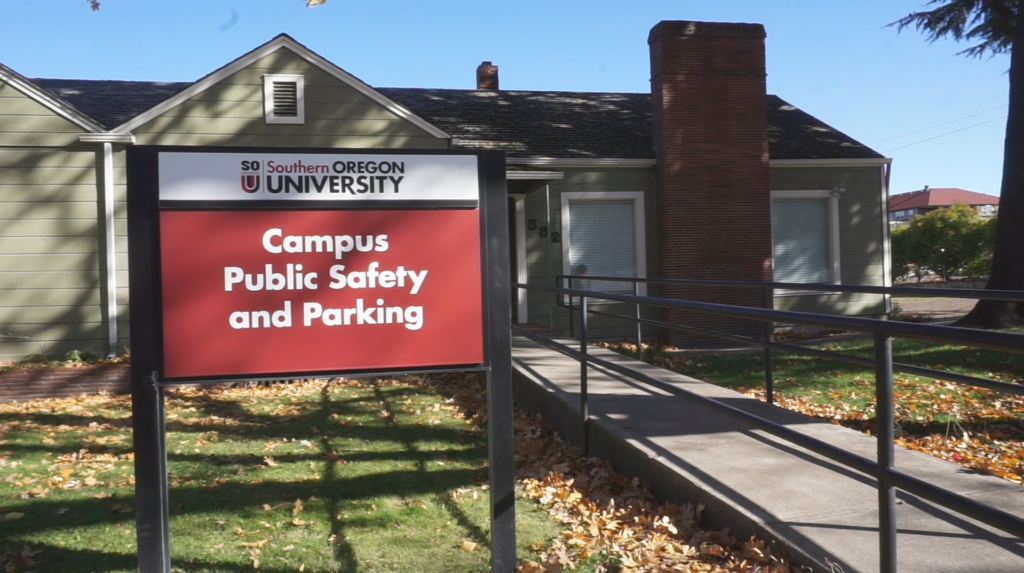SOU’s Campus Public Safety office has begun offering Civilian Response to Active Shooter Events (CRASE) training. CRASE trainings are open to departments and campus groups through InsideSOU.
Mass shootings are devastating tragedies with the potential to occur in high profile public locations such as a university. While these events are significantly less frequent than they seem, a Reuters report shows that almost half of Americans believe an active shooting will happen in the next three months. CPS’s trainings have the purpose of alleviating worry and mitigating threat.
CPS Officer Matt Roberts heads the program. In the one and a half hour Powerpoint-focused class, trainees, “prepare how to react to an emergency event on campus,” said Roberts. The class focuses on three core concepts: avoid, deny, and defend.
While these concepts may seem second nature – avoid the situation, deny access to your area, and defend yourself – Roberts pointed out that many people go about their day, “with earbuds in and not really paying attention to what’s going on around them.”
CRASE provides options on how to handle emergencies, extending to those beyond active shooters, such as fires, terrorist attacks, and so on.
The idea behind the program, Roberts said, “Is to prepare yourself. Every situation is going to be different, so we can’t really teach anyone how to react.” What CRASE offers are tactics to maximize your safety, both during an emergency, and before. Keeping an eye out for suspicious individuals, being aware of one’s surroundings, and listening for sounds like gunshots can help people be more ready to face an emergency, and even report one to stop it before it can strike. The class also shows trainees how to use the objects around them – desks, chairs, tables, etc. – to construct barricades or be used defensively.
Simulated violence, a controversial and potentially traumatizing aspect of other types of emergency trainings, including ALICE training previously offered at SOU, has been omitted from CRASE training. Aside from graphic footage and topics of discussion, which may be triggering to some, Matt says that CRASE, “shouldn’t be a risk of trauma to anyone who takes it.” The low-risk of CRASE is part of the reason he encourages everyone to attend a CRASE session, and why he and others are pushing for it to be a mandatory part of the enrollment process for incoming students.
Beyond CRASE training and the principles it offers, Matt says that we as a campus can do more to create a safe environment by paying attention to one another. From federal and state level law enforcement to an anonymous SOUCares report, there are many outlets for people to express concern for another’s mental well-being. This does not necessarily flag them as a safety threat (to themselves or others), but may intervene before they risk becoming one. In addition to SOUCares and other reporting avenues, it’s important to reach out to those we believe may be in a dark place. A helping hand, kind voice, or shoulder to cry on may do more for a person and those around them anything CRASE may teach you – and in tandem, these two things are the best anyone can do to prevent tragedy.



